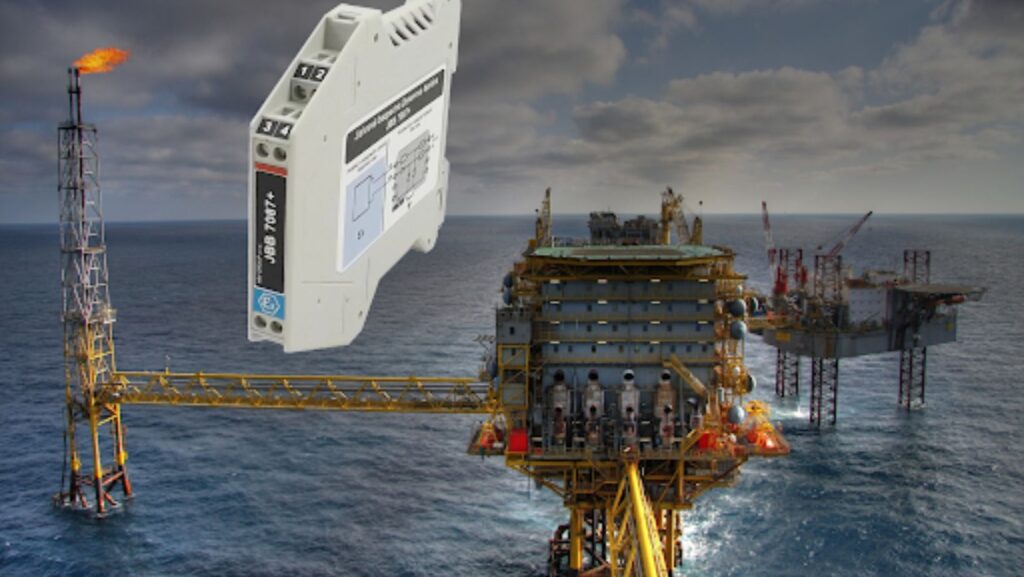
The gas and oil industry operates in hazardous environments where flammable gases, vapors, and dust are often present. To ensure safety and prevent explosions, specialized protection methods are required. One of the key components in safeguarding electrical circuits in such environments is the Zener barrier.
Zener barriers are intrinsic safety (IS) devices designed to limit energy in electrical circuits, preventing sparks or thermal effects that could ignite explosive atmospheres. This article explores the role, working principle, benefits, and applications of Zener barriers in the gas and oil industry.
What Is a Zener Barrier?
A Zener barrier is a passive protection device used in intrinsically safe systems to prevent excessive voltage and current from reaching hazardous areas. It consists of Zener diodes, resistors, and fuses that work together to:
- Limit voltage to a safe level.
- Restrict current to prevent ignition.
- Block excess energy from entering explosive atmospheres.
Zener barriers are commonly installed in safe areas (non-hazardous zones) and connected to equipment in hazardous areas (such as sensors, transmitters, and control systems).
How Do Zener Barriers Work?
Zener barriers operate based on three key protection mechanisms:
Voltage Limitation (Zener Diodes)
- If the voltage exceeds a safe threshold, the Zener diode conducts, diverting excess energy to ground.
- This ensures that only a safe voltage reaches the hazardous area.
Current Limitation (Resistors)
- Series resistors restrict current flow to a level below what is needed to generate a spark.
Fuse Protection
- If a fault occurs (e.g., a short circuit), the fuse blows, disconnecting the circuit and preventing energy transfer.
This combination ensures that no spark or thermal effect can ignite flammable substances in oil and gas facilities.
Why Are Zener Barriers Essential in the Gas and Oil Industry?
The gas and oil sector involves processing, transporting, and storing highly flammable materials. Key risks include:

- Flammable gases (methane, propane, hydrogen sulfide).
- Combustible vapors (from crude oil, gasoline, diesel).
- Explosive dust (in refining and storage areas).
Zener barriers provide intrinsic safety (IS) by ensuring that electrical equipment (e.g., pressure sensors, flow meters, control systems) cannot generate sparks or excessive heat.
Key Benefits of Zener Barriers
- Prevents explosions by limiting energy in hazardous areas.
- Cost-effective compared to other explosion-proof solutions.
- Easy to install and maintain (no moving parts).
- Compatible with various instruments (sensors, transmitters, PLCs).
- Complies with safety standards (ATEX, IECEx, NEC).
Applications of Zener Barriers in the Gas and Oil Industry
Zener barriers are widely used in different segments of the oil and gas sector:
1. Upstream Operations (Exploration & Production)
- Wellhead monitoring (pressure and temperature sensors).
- Gas detection systems (preventing ignition from electrical signals).
- Offshore platforms (protecting instrumentation in Zone 1/Zone 2 areas).
2. Midstream Operations (Transportation & Storage)
- Pipeline monitoring (leak detection systems).
- Tank farms (level sensors in flammable liquid storage).
- Compressor stations (safety interlocks).
3. Downstream Operations (Refining & Distribution)
- Refinery process control (flow meters, pressure transmitters).
- Loading terminals (preventing sparks during fuel transfer).
- Petrochemical plants (intrinsically safe signal conditioning).
Zener Barriers vs. Other Protection Methods
While Zener barriers are a popular choice, other protection methods include:
| Protection Method | How It Works | Best For |
| Zener Barriers | Limits voltage/current | Low-power circuits, sensors |
| Galvanic Isolators | Uses transformers/optocouplers | High-noise environments |
| Explosion-Proof Enclosures | Contains explosions | High-power equipment |
| Purging/Pressurization | Uses inert gas to exclude flammable mixtures | Large control panels |

Zener barriers are preferred for low-energy devices due to their simplicity and reliability.
Compliance with Safety Standards
Zener barriers must meet strict international safety regulations, including:
- ATEX (EU Directive 2014/34/EU) – For explosive atmospheres in Europe.
- IECEx (International) – Global certification for hazardous areas.
- NEC (NFPA 70, USA) – Class I, II, III divisions for North America.
Proper selection and installation are crucial to maintaining compliance and ensuring safety.
Conclusion
Zener barriers play a critical role in ensuring safety in the gas and oil industry by preventing electrical sparks in hazardous areas. Their ability to limit voltage and current makes them indispensable for protecting sensors, control systems, and monitoring equipment.
By integrating Zener barriers into safety systems, oil and gas companies can reduce explosion risks, comply with regulations, and enhance operational reliability. As technology advances, these devices continue to evolve, offering even greater protection in high-risk environments.
Key Takeaways
- Zener barriers prevent explosions by limiting electrical energy.
- They are essential for sensors and control systems in hazardous zones.
- Used in upstream, midstream, and downstream oil & gas operations.
- Must comply with ATEX, IECEx, and NEC standards.
For optimal safety, always consult with intrinsic safety experts like atexcertified.eu when designing and installing Zener barrier systems.







